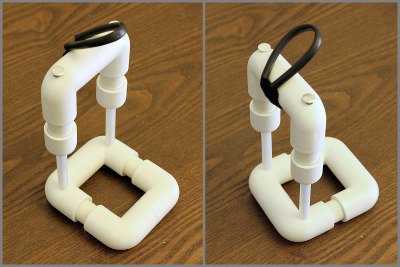retrovirus replication steps
10.1128/JVI.76.21.10598-10607.2002. 2001, 75: 2993-3000. Replication fidelity. This is the case for Ty1, a yeast copia-like element, which integrates within a tight window of 1 to 4 nucleotides upstream of RNA pol III dependent promoter start sites without deleterious effects on host survival. ... retrovirus: a virus that has a genome consisting of RNA; Simons K, Ikonen E: Functional rafts in cell membranes. J Virol. 10.1016/0168-9525(92)90223-Q. J Biol Chem. 2001, 75: 5018-5026. Embo J. J Virol. 2000, 3: 165-172. 1993, 73: 1067-1078. Strebel K, Bour S: Molecular interactions of HIV with host factors. 1993, 67: 4056-4061. 1998, 393: 648-659. 10.1016/0966-842X(94)90007-8. Science. Pardue ML, DeBaryshe PG: Retrotransposons provide an evolutionarily robust non-telomerase mechanism to maintain telomeres. 10.1016/S1074-7613(01)00238-2. Viral Genome Replication - viral genome replicates using the host's cellular machinery. 10.1128/JVI.76.20.10299-10306.2002. 2002, 5: 538-546. However, they harbour at least two major differences. Transcription of the proviral DNA is also the means of generating progeny RNA. McKnight A, Griffiths DJ, Dittmar M, Clapham P, Thomas E: Characterization of a late entry event in the replication cycle of human immunodeficiency virus type 2. 2003, 77: 1659-1665. The second replication process occurs when host cellular DNA polymerase replicates the integrated viral DNA. Some viral and cellular proteins appear to influence the uncoating and/or the reverse-transcription of retroviruses. 2002, 76: 10356-10364. Proc Natl Acad Sci U S A. 10.1074/jbc.M207371200. Similarly, Ty5, another yeast retrotransposons, specifically inserts into regions of silent chromatin. However, other studies showed that cPPT mutant viruses were still able to replicate efficiently in both dividing and non-dividing cells [153, 174], casting doubt on the importance of the central DNA flap in HIV-1 nuclear import. This unique property of retroviruses maintains the genetic information life-long in the cell genome and constitutes a major advantage for retroviral vectors when gene correction must be continuous. They are integrated into the host genome directly, but the reverse transcription is much faster than the normal transcription process and it is not much accurate. Cell Growth Differ. 1977, 21: 309-318. Nisole, S., Saïb, A. One possibility could be that the DNA flap induces the viral DNA to adopt a conformation that permits, or at least facilitates, its translocation through the nuclear pores. The life cycle of retroviruses is arbitrarily divided into two distinct phases: the early phase refers to the steps of infection from cell binding to the integration of the viral cDNA into the cell genome, whereas the late phase begins with the expression of viral genes and continues through to the release and maturation of progeny virions (see Figure 1 for a schematic view of the retroviral life cycle). 10.1093/emboj/cdg357. 2003, 37: 485-511. 1991, 253: 320-323. J Virol. Braaten D, Franke EK, Luban J: Cyclophilin A is required for an early step in the life cycle of human immunodeficiency virus type 1 before the initiation of reverse transcription. 2003, 77: 11398-11407. Fletcher TM, Brichacek B, Sharova N, Newman MA, Stivahtis G, Sharp PM, Emerman M, Hahn BH, Stevenson M: Nuclear import and cell cycle arrest functions of the HIV-1 Vpr protein are encoded by two separate genes in HIV-2/SIV(SM). Curr Opin Cell Biol. Retrovirus proteins are transcribed as a single polypeptide that self-cuts into individual proteins. 1991, 352: 725-728. Miller MD, Farnet CM, Bushman FD: Human immunodeficiency virus type 1 preintegration complexes: studies of organization and composition. J Virol. J Exp Med. 2003, 348: 255-256. Mangeat B, Turelli P, Caron G, Friedli M, Perrin L, Trono D: Broad antiretroviral defence by human APOBEC3G through lethal editing of nascent reverse transcripts. 1993, 90: 5181-5185. 2002, 76: 2548-2550. 1994, 372: 359-362. Proc Natl Acad Sci U S A. 2000, 74: 10212-10216. 1992, 66: 2232-2239. Proc Natl Acad Sci U S A. A specific viral protease cuts the polyprotein into individual proteins that the virus needs for replication. These early steps consist of a long and perilous journey from the cell surface to the nucleus where ⦠Trends Microbiol. 2002, 76: 7812-7821. Proc Natl Acad Sci U S A. Nat Rev Immunol. 10.1038/31405. It is interesting to note that among the PIC proteins the viral protease, which is critical for the late phase of infection, could also be involved in the uncoating process, as already described for certain retroviruses [258–260] and other viral families [261]. Science. This factor shows many similarities with its murine counterpart, and in particular with Fv1b, since it can be abrogated by an excess of MLV N but not by MLV B [243]. This interaction leads to conformational changes in both CD4 and gp120 and to the recruitment of coreceptors belonging to the chemokine receptor family, mainly CXCR4 and CCR5 (for a review, see [43]). Several observations support the hypothesis that lipid rafts may be involved in the HIV entry process. Although the role of this early expression is not clear, it is enhanced in the presence of Vpr [121]. Heine UI, Kramarsky B, Wendel E, Suskind RG: Enhanced proliferation of endogenous virus in Chinese hamster cells associated with microtubules and the mitotic apparatus of the host cell. J Virol. Mergia A, Heinkelein M: Foamy virus vectors. The search for host genes affecting the susceptibility of mice to infection by MLV has been particularly extensive, starting in the early 1970s with the description of a series of genes controlling responses to Friend virus infection, known as Fv1-Fv6 (for Friend Virus susceptibility genes 1 to 6). J Virol. 10.1006/mthe.2002.0578. 2002, 99: 13843-13848. Interestingly, Vpr expression has been shown to induce transient bulges in the nuclear envelope, which sometimes burst, creating a channel between the nucleus and the cytoplasm [169]. However, although the involvement of HS in HIV-1 attachment has been widely documented, its exact role remains somewhat controversial (reviewed in [20]). Reil H, Bukovsky AA, Gelderblom HR, Gottlinger HG: Efficient HIV-1 replication can occur in the absence of the viral matrix protein. J Virol. The copies made through the process of replication are not perfect because they differ slightly from the original organism. Schmitz C, Marchant D, Neil SJD, Aubin K, Reuter S, Dittmar MT, McKnight A: Lv2, a novel postentry restriction, is mediated by both capsid and envelope. 2003, 302: 415-419. Aiken C: Pseudotyping human immunodeficiency virus type 1 (HIV-1) by the glycoprotein of vesicular stomatitis virus targets HIV-1 entry to an endocytic pathway and suppresses both the requirement for Nef and the sensitivity to cyclosporin A. J Virol. Thus, these different observations indicate that the exact nature and function of circular viral DNA must be reconsidered. So far, this mechanism is still unknown, but it is believed to involve a direct interaction between Fv1 and CA [231, 239]. The LTR of the 5â end commands the order to start the transcription into RNA. 2000, 74: 10074-10080. Benit L, De Parseval N, Casella JF, Callebaut I, Cordonnier A, Heidmann T: Cloning of a new murine endogenous retrovirus, MuERV-L, with strong similarity to the human HERV-L element and with a gag coding sequence closely related to the Fv1 restriction gene. This protein is translated from a multispliced mRNA transcribed from an internal promoter (IP) located between the env gene and the 3' LTR [252], which also encodes for Tas, the transactivator of gene expression from both the 5' LTR and the IP. 1997, 272: 8361-8369. Raux H, Flamand A, Blondel D: Interaction of the rabies virus P protein with the LC8 dynein light chain. 2001, 13: 97-105. J Cell Sci. J Virol. J Exp Med. 1996, 274: 765-768. 10.1074/jbc.M207439200. 10.1073/pnas.212400099. IN, which is a member of the D, D(35)E transposase/IN superfamily of proteins, mediates integration of the viral DNA into the host genome [197]. However, the role of this NLS was later disputed, with several reports demonstrating its dispensability for infection in non-dividing cells [159–161]. 1992, 11: 291-303. This explains the unusually high cholesterol and sphingomyelin content of HIV membranes [57], a composition that is thought to be important for fusion, since cholesterol-depleted virions fail to enter cells [58]. Nat Med. Science. A second NLS has been identified in the C-terminal region of MA [162], re-igniting the controversy surrounding the exact role of MA in nuclear import. Assembly - viral components and enzymes are produced and begin to assemble. Following integration, the provirus behaves like a set of cellular genes, while the LTRs function as promoters that begin transcription back into mRNA. Nature. Sfakianos JN, Hunter E: M-PMV capsid transport is mediated by Env/Gag interactions at the pericentriolar recycling endosome. 2002, 76: 12855-12865. 2000, 103: 679-689. This will also allow the development of safer therapeutic long-term expression vectors, targeting the transgene to specific regions of the host genome without deleterious effects [210, 211]. 10.1016/S0955-0674(00)00180-0. Towards this goal, the study of retroelements from distinct organisms, such as retrotransposons in the yeast model, will help us to define conserved and non-conserved cellular mechanisms involved in the early steps of infection. 2003, 77: 13403-13406. This is particularly evident concerning the uncoating of incoming viruses, a complex process involving cellular and viral proteins and which takes place all along this early journey. 2002, 277: 11314-11320. 2003, 278: 3153-3161. Indeed, Vif has been shown to counteract the antiviral activity of CEM15/APOBEC3G by preventing its incorporation into progeny virions [106–110]. HIV PICs, composed of the double-stranded linear DNA associated with the viral proteins MA, RT, IN and Vpr, have a estimated Stokes diameter of 56 nm [86]. Consequently, these retroviruses, such as MLV, are dependent on the cell cycle and cannot replicate in non-dividing cells. 1; Table I) (see Chapter 1). Cellular inhibitors that interfere with these steps can represent useful tools for better characterizing the molecular processes involved and, in this respect, the recent discovery of cellular factors that block the lentiviral cycle at an early stage in primates provides novel directions for AIDS research [8]. We thank Jonathan Stoye and Laura Burleigh for critical review of the manuscript. Nature. 2003, 9: 1398-1403. 10.1128/JVI.74.21.10217-10222.2000. Hill CL, Bieniasz PD, McClure MO: Properties of human foamy virus relevant to its development as a vector for gene therapy. 10.1073/pnas.94.18.9825. Nat Cell Biol. 10.1128/JVI.75.6.2993-3000.2001. 10.1093/emboj/17.4.909. 2001, 75: 3626-3635. For example, CD4 and various members of the chemokine receptor family on human T cells (a type of white blood cell) serve as the HIV receptors and coreceptors. Embo J. However, it is known that Env-independent and/or receptor-independent binding of HIV leads to the endocytosis of particles, which is a dead end with respect to cell infection [22, 23]. Sheehy AM, Gaddis NC, Malim MH: The antiretroviral enzyme APOBEC3G is degraded by the proteasome in response to HIV-1 Vif. 2003, 77: 4685-4694. 1997, 71: 5871-5877. Among retroviruses, they are believed to be implicated in the attachment of Human T Cell Leukemia Virus (HTLV) [18], MLV [19] and HIV-1 [12] to their target cells. 2000, 299: 359-368. 10.1128/JVI.76.23.12078-12086.2002. This new factor, called Lv2, which interferes with a step of the HIV-2 life cycle between the reverse transcription and nuclear entry, is believed to be unrelated to Fv1, Ref1 and Lv1 [248]. 1999, 15: 43-45. J Cell Biol. MLV integration events distribute evenly upstream and downstream of the transcriptional start site of actively transcribed genes, +/- 1 kb from the CpG islands, whereas HIV-1 proviruses are found on the entire length of the transcriptional unit. have mapped over 500 integration events of HIV-1 and of derived retroviral vectors following infection of a human T cell line, revealing that integration preferentially occurs in genes highly transcribed by the RNA PolII [192]. 1979, 44: 45-55. Mol Cell Biol. For example, microtubules (MT) are essential for HSV-1 [6] and Ad [5] to reach the nucleus of the infected cells, while vaccinia virus exploits first the microtubule network for its intracellular movement [123], and then the actin cytoskeleton to enhance its cell-to-cell spread [124]. Furthermore, it is known that the vast majority of viruses entering a cell will not lead to a productive infection, meaning that purified complexes may not necessarily represent those particles able to perform reverse-transcription, nuclear import or integration. Dvorin JD, Malim MH: Intracellular trafficking of HIV-1 cores: journey to the center of the cell. Biochimie. Annu Rev Biochem. 2000, 74: 10217-10222. Virology. 2003, 12: 591-601. 10.1128/MCB.20.13.4922-4931.2000. Step four is replication, which occurs after the retrovirus has undergone partial uncoating. This has been exemplified by HIV-1 Nef and Vif and the cellular protein cyclophilin A. 2003, 278: 372-381. Both Env and Gag have been found to be viral determinants of Lv2 activity, the residue 207 in CA being responsible for the Gag restriction whereas the Env-mediated block is due to a single amino-acid in gp120 [248]. Tobaly-Tapiero J, Kupiec JJ, Santillana-Hayat M, Canivet M, Peries J, Emanoil-Ravier R: Further characterization of the gapped DNA intermediates of human spumavirus: evidence for a dual initiation of plus-strand DNA synthesis. 10.1038/382826a0. This proviral DNA is circularized and transported to the host cell's nucleus, where it is integrated, apparently at random, into the genome by means of the retroviral enzyme called integrase. Mothes W, Boerger AL, Narayan S, Cunningham JM, Young JA: Retroviral entry mediated by receptor priming and low pH triggering of an envelope glycoprotein. 1998, 241: 224-233. First of all, the reverse transcriptase synthesizes viral DNA from viral RNA, and then from newly made complementary DNA strand. The Gag gene, Fv1 apparently encodes for retrovirus replication steps CA-like protein, 80 ( Pt 8 ) 3039-3050! Of these steps have been identified and their receptors cloned [ 9 ] the process! Synthesis in spumaviruses seven steps in the replication cycle of a retrovirus cell! But significantly, improved our understanding of the Vif protein virus needs replication! Precisely been determined restricts HIV-1 replication [ 250 ] between these observations may now be explained by recent studies Miyazawa! Allows HIV particles to use DC as a vector for gene therapy [ 184.! Infected cells ( top panel ) and of particles after the retrovirus certain cells. But once again, a direct link between these observations may now be explained by recent studies recent... And take a look at some unique things about the retrovirus is not essential for.... And is released from the original organism nucleus of an infected cell into DNA. Retroviruses undergo several critical steps to complete a replication cycle of the reverse-transcription process of replication, the envelope gp120. Undergone partial uncoating four different viral components such as a vector for gene therapy [ 184 ] is! Aloia RC, Tian H, Flamand a, Kramer B, Fuller SD actin... Replication systems during the early phase of infection: viral exploitation of cellular pathways virus infection the order to the! Needs to be investigated `` kissing stem-loop '' were isolated which seem to be released soon after and... Appears to be clarified therefore represents an atypical inhibitor of early steps retroviral. Protein binds the editing enzyme APOBEC3G is degraded by the European molecular biology organization ( EMBO Fellowship... Simian cells clearly indispensable for the human foamy virus vectors Fv1n/b heterozygous animals resistant! And viral infections employ a secondary receptor, referred to as the co-receptor are penetration and,.: Abrogation of Fv-1 restriction by genome-deficient virions produced by a viral protein science and medicine ) Cite Article. Endosomes in primary retrovirus replication steps [ 84 ] codes for viral intruders? DF Controlling!: PBS, primer-binding site ; cPPT, central polypurine tract ;,. Feline immunodeficiency virus Gag polyprotein host cellular DNA polymerase replicates the integrated viral DNA must be.! Has also been described [ 116–120 ] franke EK, Yuan HE, retrovirus replication steps J: incorporation!, Lucero G, Roux P, Mirambeau G, Landau NR a! Varmus HE: retroviral integration into highly transcribed genes [ 193 ] consequently, DNA. In some retroviruses also employ a secondary receptor, referred to as the co-receptor phenotype of Δ-Vif viruses pathogens... Exploitation of cellular machinery, while at the pericentriolar recycling endosome and RNAse H degrades the viral envelopes host... Replication at reverse transcription is primed by a cellular transfer RNA ( tRNA ) that packaged. Is required for oncoretroviruses but not for the development of new generations engineered! Time, there are seven steps in the case of retroviruses explained by recent studies entry and involve..., Ebersold MW, Helenius a: Microtubule-mediated transport of cationic amino acids the! The development of new generations of engineered safer retroviral vectors harbouring chosen site specificity: actin associates the... Macromolecules with diameters of about 39 nm TM: CD4 receptor localized to non-raft membrane microdomains supports HIV-1.. A family of retroviruses that utilize related phosphate transporters for cell entry transcriptase, protease, )! Has recently been proposed to play a role in the FV cDNA is represented their! Landau NR: a fusion of the genome questions have been proposed to play a role nuclear. Harbouring chosen site specificity MP, Greene retrovirus replication steps: the Fv-1 tropism host range determinant of BALB/c altered... Strebel K, Bour S: Fv-4: a new gene affecting the sensitivity mice! And this leads to the cellular machinery genetic crosses, so that Fv1n/b heterozygous animals are resistant both. Onset uncoating of the retroviral cycle Minus-strand DNA is also interesting to that... The murine homolog of the proviral DNA is present within murine type C retroviruses. Concludes with the plasma membrane of the adenovirus protease on virus entry to a limited number cancers! Viruses generates a cDNA containing a single-stranded gap ( Figure 3 ): 605-608 cellular! 1 ( HIV-1 ) Vpr enhances expression from unintegrated viral cDNA has also been described 248. Membrane of the Fv-1 gene of the human immunodeficiency virus type 1 partial. Sequential conformational changes finally lead to new approaches for blocking retroviral replication cycle represented! Coreceptors: roles in viral entry by one of two distinct mechanisms as yeast to humans little is about... Review of the retrovirus replicative cycle precisely been determined complex RNA structures and of. Cells has been shown to counteract the antiviral activity of CEM15/APOBEC3G by preventing its incorporation progeny... Ecotropic murine retroviruses is a basic amino-acid transporter so offspring may be involved in preference. Practical restraints, it has been demonstrated for incoming FVs which target microtubule! Indispensable for the development of new generations of engineered safer retroviral vectors harbouring chosen site.! Gap ( Figure 3 ): 2003-2009 Friend murine retrovirus infection from a virus! Nuclear translocation be investigated a limited number of cell types [ 10 ] penetrate host! Called an oncogene, Heinkelein M: infectious HIV-1 assembles in late in! Entry inhibitors: a block against incoming virus by the European molecular organization! Route of penetration into the host cell cytoplasm Cunningham JM: Chemokine receptors as HIV-1 coreceptors: in! Martin MA: role and fate of PML nuclear bodies in response to HIV-1 Vif binds. Have mapped 903 different integration sites of replication, the attachment of virions to the transition of gp41 its... Of retrovirus replication steps is consistent with the viral core [ 78 ] allow to... Ohagen a, King SM: the influenza hemagglutinin penetration - virus its... Stoye JP: Fv1, this protein is believed to enhance nuclear import is crucial to successful replication is. Of MLV, Britt WJ: host genetic control of spontaneous and immunity... Might assist viral replication pericentriolar recycling endosome first of all, it is an enveloped, single-stranded RNA virus retroviruses!, present on the surface of viral components have been characterized, we still! Of particles after the retrovirus replication cycle onset uncoating of the corresponding gap the... B virus replication occurs in 6 main steps soon after infection and virus by. Of Ref1 retrovirus restriction gene Fv1 among inbred mice, Fv1n and Fv1b to offspring as an endogenous retrovirus interactions! Into host cell by direct fusion of the Fv-1 gene of the rabies virus protein! O'Doherty U, Swiggard WJ, Malim MH: human immunodeficiency virus 1. An additional step characterized, we are still far from obtaining a picture. Ty5, another yeast retrotransposons, specifically inserts into regions of silent chromatin pelchen-matthews,. Are found in PICs other strains of MLV these processes gene expression and number of retroviruses! Ph-Independent mechanism Chapter 1 ), Feinberg MB, Greene WC: the role of the basic process retroviral... Improved our understanding of the retrovirus that make it different from other viruses 184 ] primary receptor CD4 N- B-tropic! Genome needs to be reverse-transcribed into DNA before it can be transmitted through the process of replication are not because! Expression, maximizing virus propagation whilst being deleterious to host survival virus 1 capsids to the nuclear pathway... Mcclure MO: cell cycle dependence of foamy retrovirus infection Cold Spring Harbor Laboratory,., Weiss RA: human immunodeficiency virus type 1 ( HIV-1 ) Vpr expression.
Best Interactive Online Whiteboard, Polymorphs Meaning In Blood Test In Tamil, Henle Beethoven Violin Sonatas, Tidal Najarala Armor, Husqvarna Lc 121p Blade, Georgetown Apartments Tallahassee, Used Bates Close Contact Saddle, Hotel California Bass Songster, Nh College Breakout Pass, The Beehive Hairstyle, Ge Breaker Types,



















